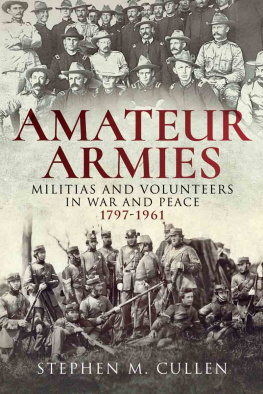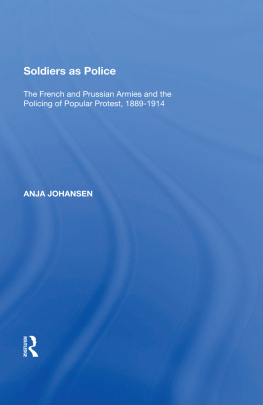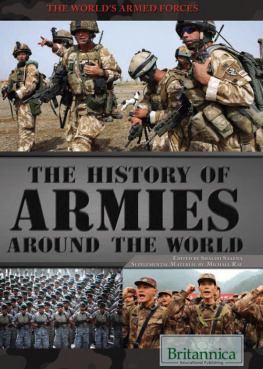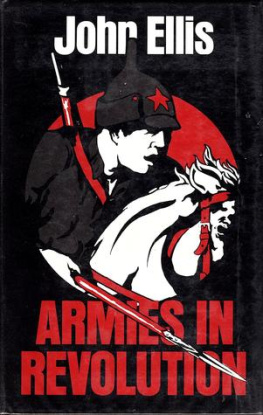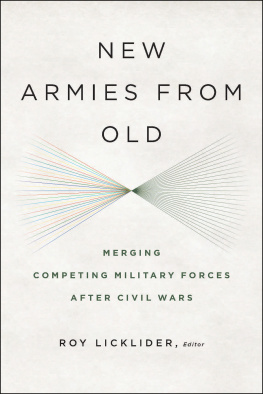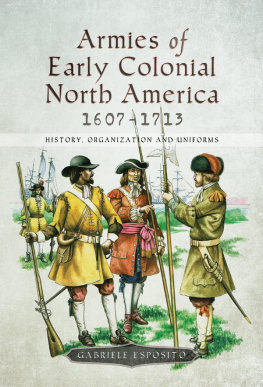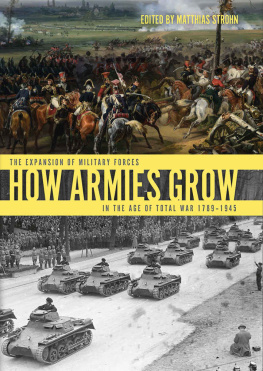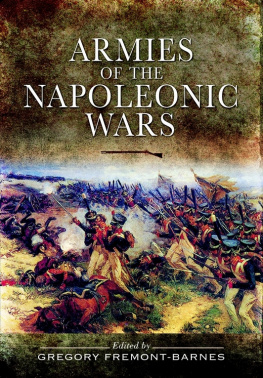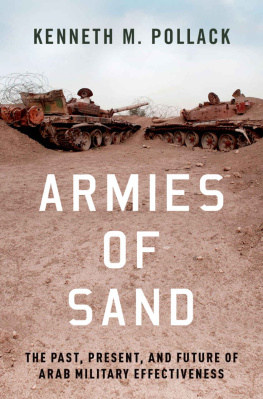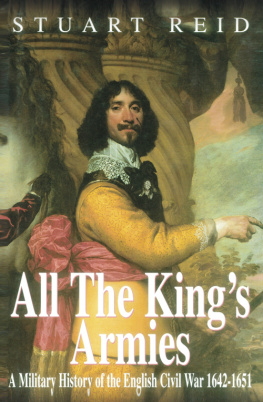Pagebreaks of the print version

Amateur Armies
Amateur Armies
Militias and Volunteers in War and Peace, 1797-1961
Stephen M. Cullen
First published in Great Britain in 2020 by
PEN & SWORD MILITARY
An imprint of
Pen & Sword Books Ltd
Yorkshire Philadelphia
Copyright Stephen M. Cullen 2020
ISBN 978-1-52673-443-3
ePUB ISBN 978-1-52673-444-0
Mobi ISBN 978-1-52673-445-7
The right of Stephen M. Cullen to be identified as Author of this work has been asserted by him in accordance with the Copyright, Designs and Patents Act 1988.
A CIP catalogue record for this book is available from the British Library
All rights reserved. No part of this book may be reproduced or transmitted in any form or by any means, electronic or mechanical including photocopying, recording or by any information storage and retrieval system, without permission from the Publisher in writing.
Pen & Sword Books Ltd incorporates the imprints of Pen & Sword Archaeology, Atlas, Aviation, Battleground, Discovery, Family History, History, Maritime, Military, Naval, Politics, Social History, Transport, True Crime, Claymore Press, Frontline Books, Praetorian Press, Seaforth Publishing and White Owl
For a complete list of Pen & Sword titles please contact
PEN & SWORD BOOKS LTD
47 Church Street, Barnsley, South Yorkshire, S70 2AS, England
E-mail:
Website: www.pen-and-sword.co.uk
Or
PEN AND SWORD BOOKS
1950 Lawrence Rd, Havertown, PA 19083, USA
E-mail:
Website: www.penandswordbooks.com
For my grandson,
Toby,
a budding historian and writer.
List of Illustrations
1. Grenadier of a Volunteer regiment, c.1805
2. A Military Squabble about Dress
3. St Georges Volunteers charging down Bond Street
4. Push on, brave York volunteers
5. The Battle of Chteauguay, 1813
6. Lieutenant Colonel Charles de Salaberry leads his volunteers and militiamen at Chteauguay
7. Lieutenant Colonel de Salaberry, victor of Chteauguay
8. The Victorian amateur soldier, Staffordshire Rifle Volunteers, c.1860
9. Officers of the 1st Aberdeenshire Rifles, 1881
10. Uniforms of the 1st Sutherland Volunteer Rifle Corps, 18601908
11. Bicycle-mounted Volunteers in South Africa, 1899
12. Officers of the 1st US Volunteer Cavalry, Rough Riders, at Long Island before embarkation for the invasion of Cuba, 1898
13. 1st US Volunteer Cavalry at Las Gausimas
14. Captain Parkers Gatling guns on Cuba
15. 71st New York Volunteers in quarantine in the USA after the Cuban campaign
16. The Spanish Falangist leader, Jos Antonio Primo de Rivera, inspects his blue-shirted militia before the outbreak of the Spanish Civil War
17. Republican militia besieging the Alczar
18. Heroic portrayal of Falangist militia in July 1936
19. Weapons inspection for Castroist MNR militiamen
20. MNR militia in action, probably during the Bay of Pigs invasion
21. Castroist troops advance behind T34/85 tanks during the Bay of Pigs fighting
22. MNR militia in action
23. MNR militiamen with Czech-made Soviet anti-aircraft artillery
Acknowledgements
My thanks go to Rupert Harding at Pen and Sword, for his patience and always welcome feedback and encouragement. Also, to my erstwhile classmate at primary school, Katharine Ball, now Librarian of the Leddy Library, University of Windsor, Ontario, Canada, for hunting down a difficult-to-find history of the War of 1812. To my wife, Mairi Ann, whose encouragement enabled me to keep writing. Finally, to my late parents, who, many years ago, bought me a little desk at which I copied out favourite passages from Ladybird Books, a process that taught me that writing was not just something one did at school.
Chapter 1
From Wales to Cuba, 17971961
The Roman Legionary is one of the most recognised figures from history, and the general perception of the Legions as an extraordinarily effective military force is common. That commonplace view is built upon the Roman army as it developed in the second and first centuries BC as Rome began to spread beyond the Mediterranean, beginning the process that Scipio Africanus called, in his pre-battle speech to the Legions at the Battle of Zama in 202 BC , the conquest of the world. That rise to pre-eminence was enabled by the professional legionaries of Marius, the general credited with the creation of a new type of legionary for whom military service was a career rather than a temporary interlude. It was a change that enabled the continued growth of the Empire, but could not, in the end, prevent Imperial collapse in the West. Even though the habits and practices of Rome faded, the creation of a permanently embodied professional army had established a formula that survived, and returned fully in Europe during the eighteenth century. But, just as the model of the professional soldier survived through the centuries of war bands, knights, retainers, and the armed peasant, so, too, did the amateur soldier survive in the world of the professional army.
This book examines the role of the amateur soldier in the modern period, the period when warfare, at least in the Western world, has been characterised by the dominance of the professional soldier and the standing army. Despite that dominance, the amateur soldier, the part-timer, men embodied for local , with the history of the Rifle Volunteer Movement in Victorian Britain. It was not until almost the end of the Volunteer Movements existence that any of these amateur soldiers saw active service, but they had a noted place in Victorian society and culture. They were, in effect, an important part of one of the great projects of the long Victorian century, the creation of an orderly, stable civil society out of the social chaos of the Industrial Revolution. But, they also stood ready to face the French invasion which, at various times up until the defeat of France in 1871, seemed imminent.
Amateurs and Professionals
Almost fifty years ago, the prolific military historian, Major C.J.D. Jock Haswell, turned his attention to the amateur soldier in his book Citizen Armies . In his history, Haswell attempted the tricky task of defining what is meant by the terms amateur soldier and citizen army, and arrived at a four-part definition:
Firstly, it should have come into being as the result of a supreme national crisis arising from an actual or threatened attack on a countrys territory and, or, its freedom. Its original motives were therefore primarily defensive: to protect a way of life. Secondly, the army thus raised must have had, from the beginning, the approval and support of the recognized local government within the country concerned. Thirdly, it must have developed into a properly constituted field force; and fourthly, the majority of its soldiers and officers
This definition has only partial applicability to the amateur soldiers and armies examined here. It applies in the case of the various amateur military units that came together to frustrate the last French attempt at invading Britain, at Fishguard in 1797, but does not really match with the various volunteer units that rallied to the Stars and Stripes in 1898 to fight in Cuba against the Spanish; while the Rifle Volunteers persisted over long periods when there was no real threat to Britain from France, and, in fact, only saw action in 1899 against the Boer Republics. Further, the military structures that the various Canadian and US volunteers rallied to during the War of 1812 were already in place before any supreme national crisis transpired. In addition, there is the case of the astonishing range of militias that prosecuted the Spanish Civil War, especially in the crucial initial stages when the outcome hung in the balance. In Spain in 1936, the regular army, split between those loyal to the Republic and those who rallied to the nationalist rebels, formed only part of the fighting forces of both sides, with anarchists, socialists, communists, Falangists, and Carlists putting large numbers of militia into the field. It was militia from these opposing political groups which determined the fate of the Alczar in 1936, which is examined here in . The other strongly political militia and volunteer example in this book is that of the Castroist MNR, but this was a very large force organised by the new Cuban regime, as opposed to the Spanish Civil War where the political militias represented bottom-up creations at a time when there was no effective government which controlled all of Spain.

